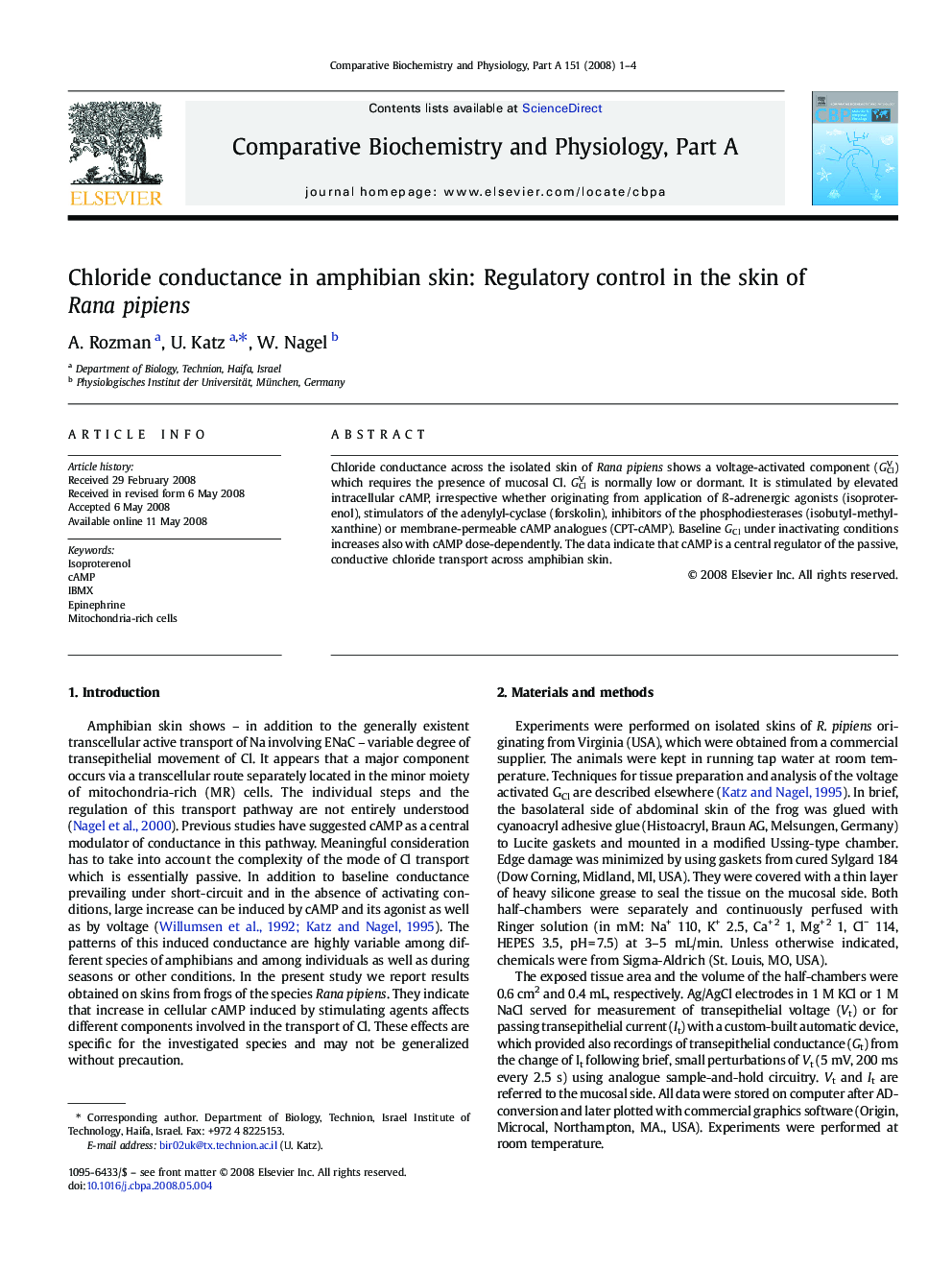| Article ID | Journal | Published Year | Pages | File Type |
|---|---|---|---|---|
| 1973486 | Comparative Biochemistry and Physiology Part A: Molecular & Integrative Physiology | 2008 | 4 Pages |
Abstract
Chloride conductance across the isolated skin of Rana pipiens shows a voltage-activated component (GClV) which requires the presence of mucosal Cl. GClV is normally low or dormant. It is stimulated by elevated intracellular cAMP, irrespective whether originating from application of Ã-adrenergic agonists (isoproterenol), stimulators of the adenylyl-cyclase (forskolin), inhibitors of the phosphodiesterases (isobutyl-methyl-xanthine) or membrane-permeable cAMP analogues (CPT-cAMP). Baseline GCl under inactivating conditions increases also with cAMP dose-dependently. The data indicate that cAMP is a central regulator of the passive, conductive chloride transport across amphibian skin.
Related Topics
Life Sciences
Biochemistry, Genetics and Molecular Biology
Biochemistry
Authors
A. Rozman, U. Katz, W. Nagel,
